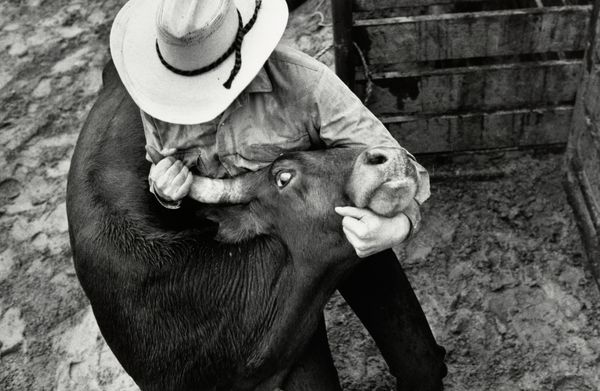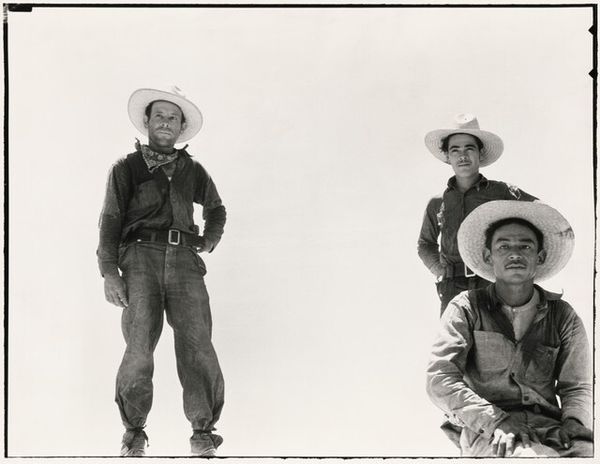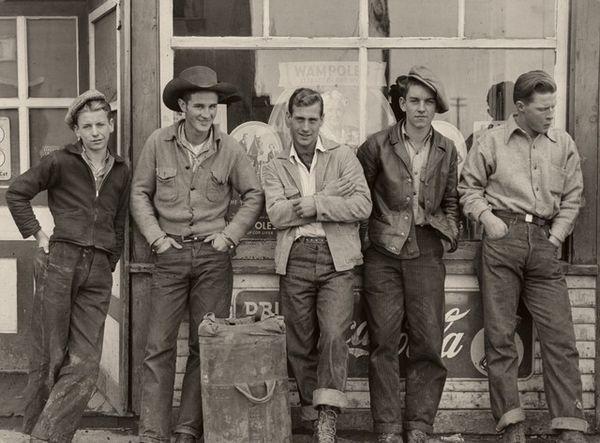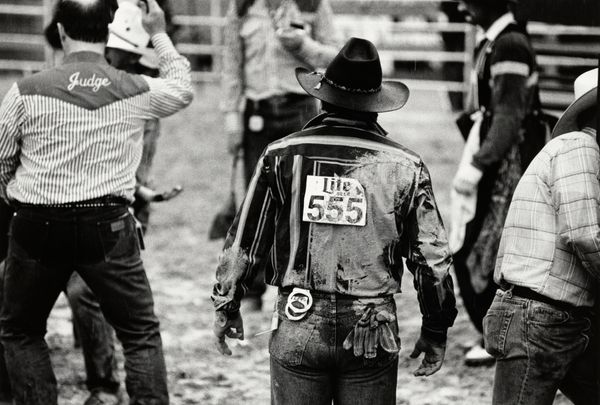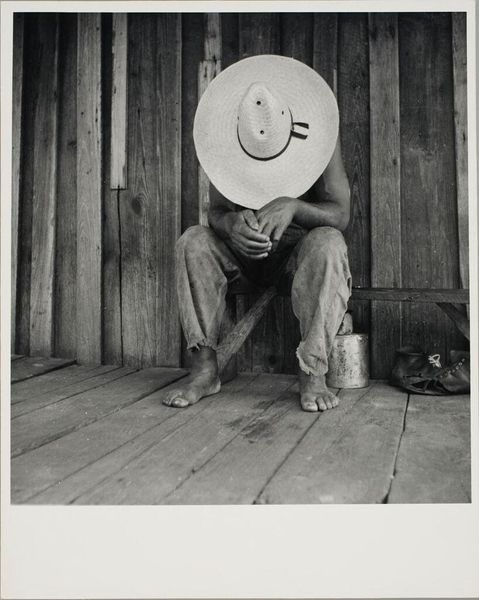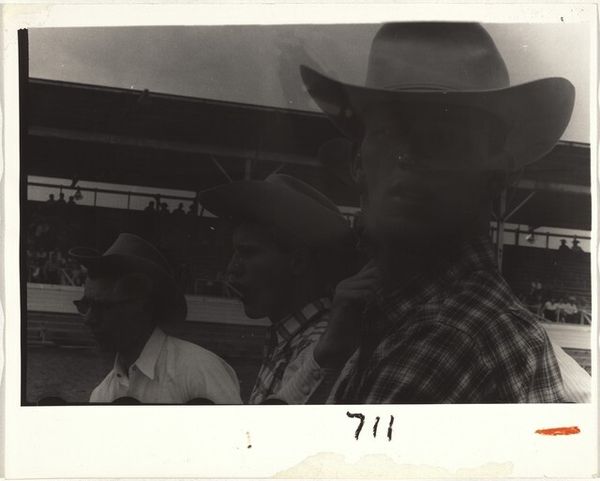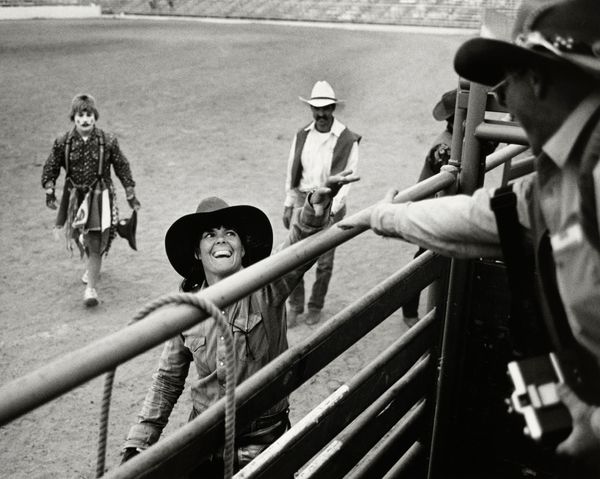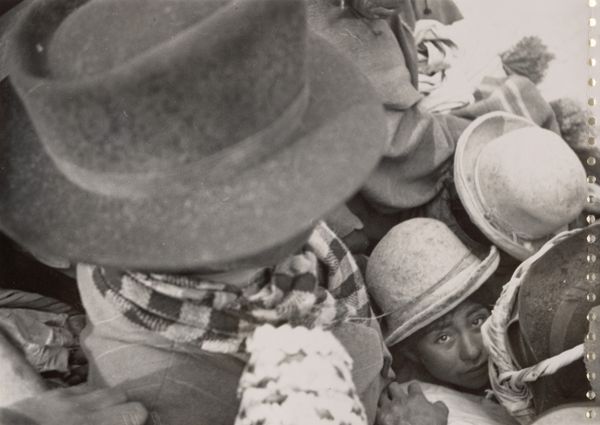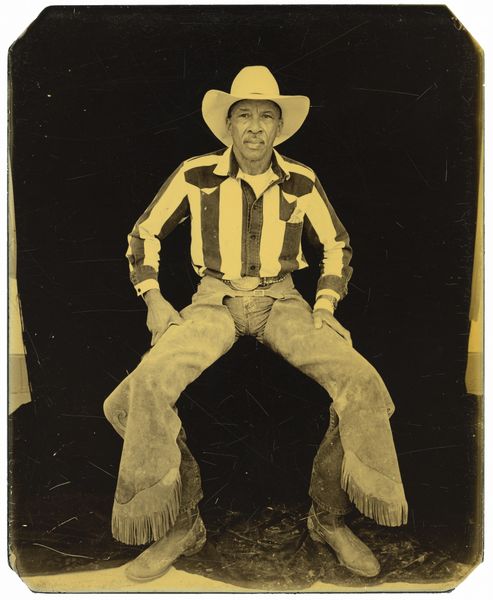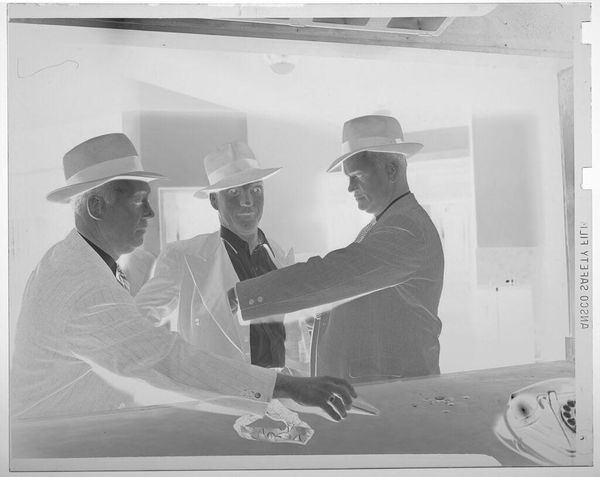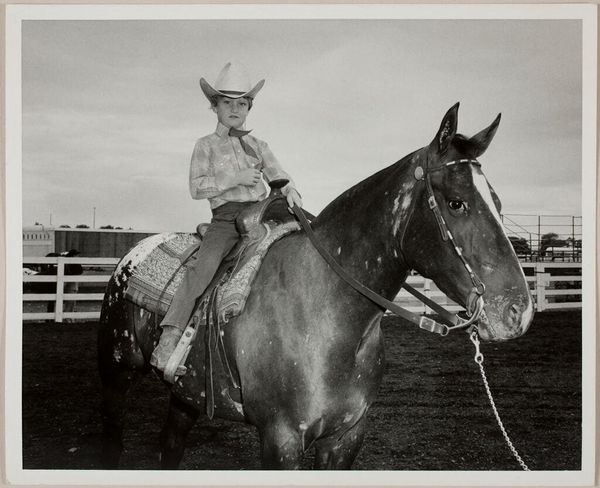
photography, gelatin-silver-print
#
portrait
#
contemporary
#
street-photography
#
photography
#
group-portraits
#
black and white
#
gelatin-silver-print
#
monochrome photography
#
street photography
#
realism
Dimensions: image: 29.8 × 45.7 cm (11 3/4 × 18 in.) sheet: 40.3 × 51.1 cm (15 7/8 × 20 1/8 in.)
Copyright: National Gallery of Art: CC0 1.0
Curator: Nancy Andrews’ gelatin silver print, “The Rodeo, no. 4,” dated 1992, confronts us with an immediate, almost raucous energy. What is your initial response to the image? Editor: The dynamism is what strikes me first. The light, despite being a monochrome photograph, captures an ebullient moment of youthful energy and camaraderie. The composition, albeit staged, hints at a vibrant culture and timeless ritual. Curator: Andrews, in this piece, meticulously frames a group of individuals—ostensibly rodeo participants—engaging in what appears to be a ritualistic display of physical strength or perhaps even play. The spatial arrangement, the subtle gradations of tone, invite an almost structural reading of social dynamics. Editor: The central figure suspended between the group really arrests my gaze. It almost represents the vulnerability inherent in this world. This pose isn't just about muscle; it hints at submission, reliance, and an almost paternalistic element among the cowboys. There's this delicate interplay between masculinity and something softer. Curator: Precisely. Observe how Andrews utilizes the monochrome palette to accentuate textures and forms, allowing a certain flatness to pervade the image. This strategy undermines conventional depth, emphasizing a certain theatricality embedded within the rodeo subculture. Editor: Note also the symbolism of their garments, which are potent in cowboy culture. From the wide-brimmed hats to the decorative belt buckles, each element conveys a unique persona while still aligning the men with the visual motifs of American frontier life. And of course, Andrews, intentionally or unintentionally, has captured a cultural touchstone, frozen in time. Curator: Yes, but the genius lies in its presentation. Through a highly controlled framing, Andrews constructs a meta-narrative that encourages viewers to dissect both the aesthetic and cultural signs manifested in "The Rodeo, no. 4." Editor: It is truly rich with iconographic value, wouldn't you agree? It reminds me that while social performances are fleeting, their symbolic meanings resonate powerfully within us all. Curator: Indeed. Andrews compels us to actively confront how we frame, construct, and inevitably, comprehend the cultural theatrics that govern the way we express ourselves within both social and historical realms. Editor: It gives one so much to ponder about how we view historical identity!
Comments
No comments
Be the first to comment and join the conversation on the ultimate creative platform.
